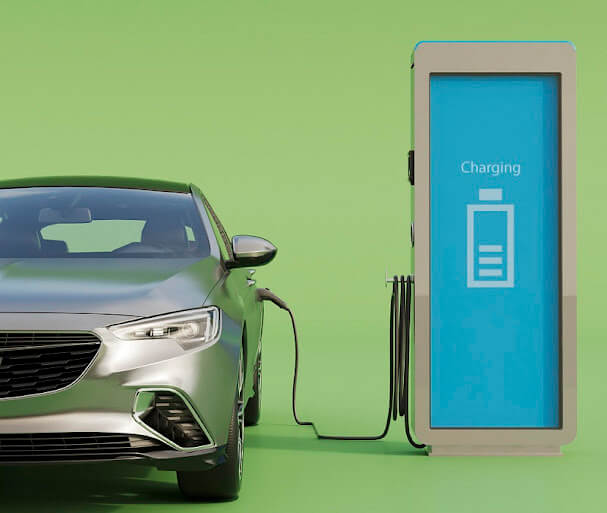The automotive industry has witnessed a remarkable shift towards sustainable transportation solutions. EVs offer a promising shift from traditional cars, slashing emissions and lessening dependence on fossil fuels. With the increasing demand, EV Charging Communication Unit is crucial component.
The global is expected to grow at a CAGR of 28.63%. In 2022, this market was valued at $0.12 billion in 2022 and expected to reach 1.53 billion by 2032. The EV Charging Communication Unit serves as the linchpin in the infrastructure supporting electric vehicles. It acts as the intermediary between the EV and the charging station, enabling seamless communication and data exchange. This vital component plays a pivotal role in streamlining the charging process, ensuring compatibility, authentication, and efficient energy transfer.
The Evolution of EV Charging Communication Units
EV Charging Communication Unit facilitates a basic connection between the EV and the charging station. However, as the EV market expanded, the demand for more sophisticated and intelligent systems grew. Modern communication units have evolved to incorporate advanced functionalities, including:
Data Exchange: Communication units facilitate vital data exchange between EVs and charging stations, including charging status and authentication.
Interoperability: With various EV models and charging stations available, ensuring compatibility and interoperability has become paramount. These units incorporate different protocols and standards to accommodate diverse charging needs.
Remote Monitoring and Control: Advanced communication units allow remote monitoring of charging sessions and offer control functionalities to manage charging rates, schedules, and energy distribution.
Challenges and opportunities
While the EV Charging Communication Unit Market shows tremendous promise, it also faces certain challenges:
Standardization: Ensuring uniform standards and protocols across different manufacturers remains a challenge for seamless interoperability.
Infrastructure Development: Building an extensive charging infrastructure globally requires substantial investments and strategic planning.
Cybersecurity: As EVs grow more connected, robust cybersecurity in communication units is crucial to protect user data.
Several key factors contribute to this expansion:
Increasing EV Adoption: The escalating adoption of electric vehicles worldwide is the primary driver of the EVCCU market. Governments and environmental organizations are encouraging the shift toward cleaner transportation, leading to a growing fleet of EVs.
Smart Charging Infrastructure: The development of smart charging infrastructure is a key trend. EVCCUs are integral to this, enabling features such as demand response, load management, and grid integration. These capabilities are crucial to making EV charging more efficient and cost-effective.
Enhanced Connectivity: The demand for improved connectivity and interoperability is pushing manufacturers to develop EVCCUs that can communicate seamlessly with different charging stations and vehicles, regardless of the manufacturer.
Regulatory Support: Governments across the globe are offering incentives and subsidies to promote the installation of EV charging infrastructure. This is bolstering the EVCCU market by encouraging investments in charging technology.
Environmental Concerns: Growing environmental awareness and the need to reduce greenhouse gas emissions are leading consumers and organizations to opt for electric vehicles, further boosting the EVCCU market.
EV Charging Communication Unit Market: by Region
- North America
- Europe
- U.K.
- China
- Asia-Pacific and Japan
- Rest-of-the-World
China dominates the global EV charging communication unit market, showcasing a consistent leadership position in electric vehicle (EV) production and adoption. The nation’s swift economic growth, and strong commitment to reducing emissions have propelled it to a prominent global standing in the EV industry. Forecasts predict sustained rapid expansion in China’s EV charging communication unit market, supported by ongoing government backing, robust growth in the domestic EV sector, and the presence of key industry players. Furthermore, the United States, Germany, Japan, and South Korea are poised to play significant roles in this market, as they too invest significantly in EV development and associated charging infrastructure.
Future Outlook
The future of the EV charging communication unit market looks promising. Technological advancements, coupled with supportive government policies and increasing consumer demand for EVs, are expected to drive substantial growth. The market will witness a surge in innovation, focusing on enhancing charging speeds, interoperability, and integrating renewable energy sources into the charging ecosystem.
Conclusion:
The EV Charging Communication Unit Market stands as a critical enabler in the transition towards sustainable transportation. As technology continues to evolve and the EV landscape matures, these units will play an increasingly pivotal role in shaping the future of mobility, facilitating convenient and efficient charging experiences for EV owners worldwide.









